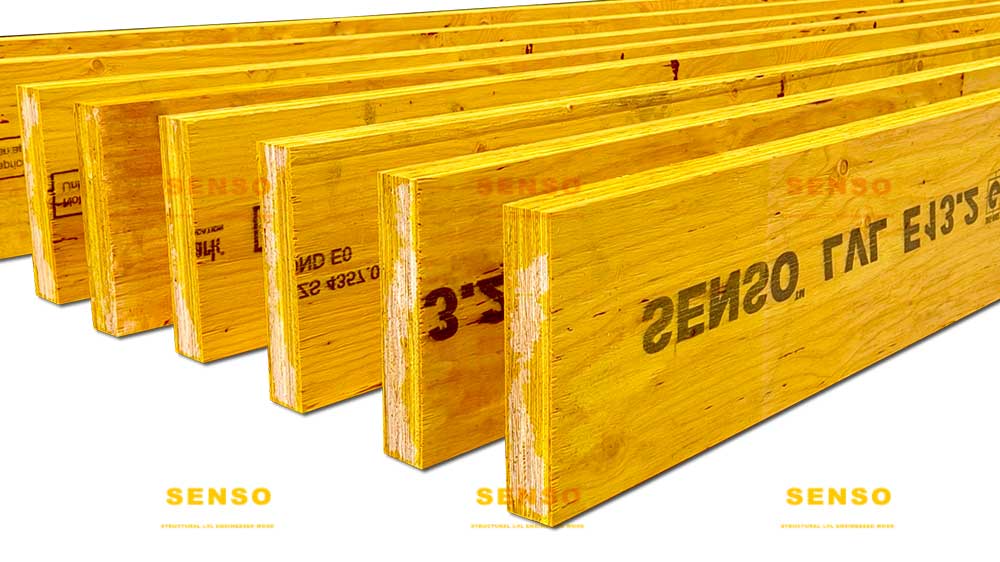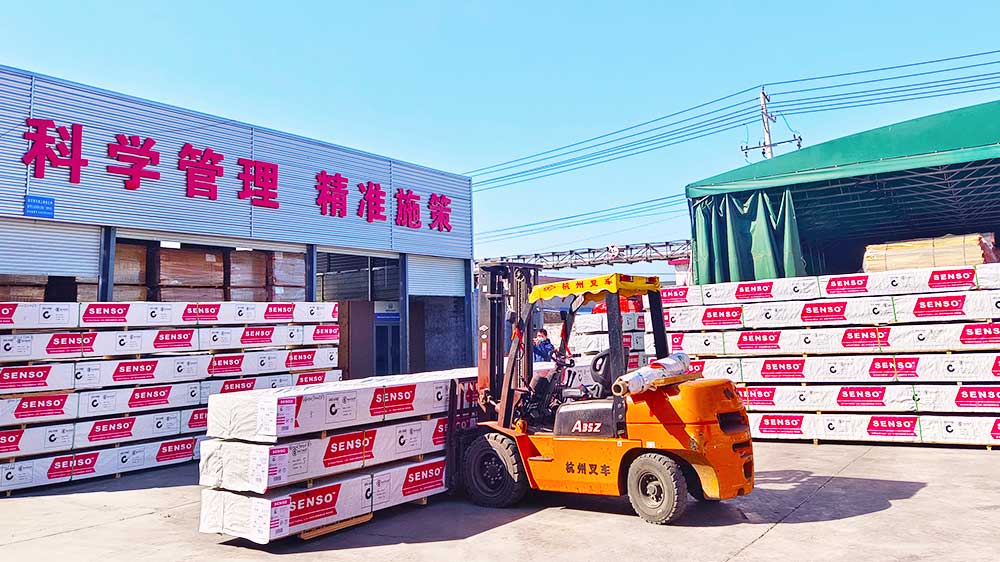Laminated Beams: The Fusion of Durability and Beauty

When it comes to construction, there’s always a trade-off between aesthetics and functionality—except, it seems, when Laminated Beams are concerned. These finely crafted beams bring together the best of both worlds: strength and beauty. In this comprehensive guide, you’ll get to know why they have become the go-to material for various construction needs.
Subsection: What are Laminated Beams?
Laminated Beams are made by fusing together layers of timber or other materials. This lamination process makes the beams stronger, more stable, and highly adaptable for different architectural styles.
Core Features of Laminated Beams
A. Unmatched Strength
1. High Load Capacity
The lamination process results in a higher load-bearing capacity. The layers work in synergy, allowing Laminated Beams to sustain more weight than traditional single-piece beams.
2. Durability
Because of their layered structure, Laminated Beams resist warping and bowing. They hold up exceptionally well against environmental stressors like humidity and temperature changes.
B. Versatility in Design
1. Curved or Straight
Whether you’re aiming for classic straight lines or intricate curves, these beams can be manufactured to meet your specific design requirements.
2. Customizable Aesthetics
Laminated Beams can be coated, painted, or stained to match any color scheme. Their smooth surface also makes them suitable for decorative finishes.
Laminated Beams Environmental Impact and Sustainability
A. Eco-Friendly Manufacturing
1. Responsible Sourcing
The timber used in Laminated Beams often comes from sustainable forests, ensuring an eco-friendly lifecycle from start to finish.
2. Waste Reduction
The lamination process allows for optimal use of raw materials, minimizing waste.
B. Energy Efficiency
1. Natural Insulation
The wooden layers in Laminated Beams provide excellent thermal insulation, contributing to energy-efficient buildings.
2. Carbon Footprint
These beams lock away carbon dioxide, making them not just a sustainable but also a climate-friendly choice.
Laminated Beams Applications and Use Cases
A. Residential Construction
1. Interior Decor
Laminated Beams are perfect for open-plan designs, providing the structural support needed without compromising the home’s aesthetics.
2. Outdoor Living
Whether it’s a patio, pergola, or a deck, the versatility of these beams shines in residential outdoor settings.
B. Commercial Construction
1. Public Buildings
From libraries to town halls, the strength and visual appeal of Laminated Beams are being appreciated in public spaces more than ever.
2. Industrial Use
In warehouses and factories where high-load bearing capacities are needed, these beams prove to be indispensable.
Laminated Beams Cost-Benefit Analysis
A. Initial Costs vs Long-term Benefits
1. Upfront Costs
While Laminated Beams may come with a higher upfront cost, their durability makes them a wise investment for the long term.
2. Maintenance Costs
One of the most appealing features of these beams is their low-maintenance requirement. An occasional wipe-down is often enough to keep them looking new.
B. Value Addition
1. Property Value
Integrating Laminated Beams into your construction project can significantly boost the overall property value, making them an excellent return on investment.
2. Aesthetic Value
It’s hard to put a price on beauty. These beams contribute an elegant look to any structure, satisfying both architects and property owners alike.
How to Choose the Right Laminated Beams for Your Project
A. Material Selection
1. Wood Types
Various types of wood can be used in the lamination process. Choose one that complements the other materials in your project for a harmonious look.
2. Composite Options
For those looking for even more strength, composite Laminated Beam that incorporate materials like steel or carbon fiber are also available.
B. Manufacturer Guidelines
1. Warranty Information
Always check the manufacturer’s warranty to ensure that you’re getting a quality product that’s built to last.
2. Installation Guidelines
Proper installation is crucial for the performance of Laminated Beams. Always follow the manufacturer’s guidelines for the best results.
Laminated Beams Environmental Benefits
A. Eco-Friendly Production
1. Sustainable Sourcing
Laminated Beams are often made from sustainably sourced timber, contributing to environmental conservation efforts.
2. Reduced Waste
The lamination process itself can be quite efficient, minimizing waste by optimizing the use of available wood pieces.
B. Longevity and Recyclability
1. Life Span
The extended life span of LVL Beams ensures that they don’t quickly end up in a landfill, thus reducing environmental impact.
2. Reusability
When a structure undergoes renovation or demolition, these beams can often be reused, further lowering their environmental footprint.
Laminated Beams Market Trends and Innovations
A. Technological Advancements
1. Smart Beams
Recent developments include ‘smart’ Laminated Beams equipped with sensors to monitor structural health in real-time.
2. Prefabrication
The prefabrication market for LVL Beam is growing, allowing for quicker construction times and reduced labor costs.
B. Design Trends
1. Integrated Lighting
One of the latest design trends is the incorporation of LED lighting directly into the beams, adding both functional and aesthetic appeal.
2. Minimalistic Designs
The clean lines of Laminated Beams perfectly complement modern, minimalistic architectural styles, making them increasingly popular in contemporary designs.
Laminated Beams Case Studies and Testimonials
A. Residential Use
1. Suburban Family Home
A case study reveals that a suburban family was able to create a more open and inviting space by opting for Structural LVL in their home renovation.
2. Beachfront Property
One beachfront property owner cited the beams’ resistance to moisture and salt as a key advantage.
B. Commercial Use
1. Library Project
In a public library, Laminated Beams were used to achieve a spacious, yet cozy atmosphere, receiving positive public feedback.
2. Warehouse Efficiency
An industrial case study showed that LVL Timber were not only cost-effective but also increased operational efficiency by allowing for greater open spaces within the warehouse.
Laminated Beams Buying Guide and Tips
A. What to Look For
1. Quality Assurance
It’s crucial to ensure that the Laminated Beams have undergone rigorous quality checks and meet all the applicable safety standards.
2. Material Source
A thorough understanding of the wood’s origin and treatment can offer insights into its quality and durability.
B. Cost-Efficiency
1. Budget Considerations
While Laminated Beams may seem costly upfront, their durability often makes them a more budget-friendly option in the long run.
2. Seasonal Pricing
Beams’ prices may fluctuate based on the season and the availability of raw materials, so it’s worth shopping around and planning your purchase accordingly.
How to Install Laminated Beams
A. DIY or Professional Help?
1. Skill Level
While the DIY route is an option, installation generally requires a level of skill and tools that most homeowners don’t have.
2. Time Factor
Engaging professionals for installation can save you a considerable amount of time and potentially avoid costly mistakes.
B. Necessary Tools
1. Lifting Equipment
Heavy lifting equipment is usually necessary for placing the beams, especially in large structures.
2. Fasteners
Specialized fasteners are typically used to ensure a secure connection between the beam and other structural elements.
Laminated Beams Frequently Asked Questions
A. Can these beams be used outdoors?
1. Weather Resistance
Laminated Beams are often treated to be resistant to outdoor conditions, but it’s best to consult the manufacturer for specific use-cases.
2. Protective Coating
A protective coating may be necessary for beams that are directly exposed to harsh weather.
B. How do they fare in high-moisture environments?
1. Moisture Resistance
Most Laminated Beams undergo treatments to make them resistant to moisture, making them suitable for humid conditions.
2. Warranty Concerns
Always check the warranty details to see what kinds of environmental conditions are covered.
Caring for Your Laminated Beams
A. Regular Maintenance
1. Cleaning
It’s advisable to clean the surface of your beams with a soft, damp cloth, avoiding the use of harsh chemicals that could deteriorate the wood.
2. Inspections
Regular structural inspections can help identify any issues before they escalate, ensuring longevity and safety.
B. Repairs and Refinishing
1. Minor Repairs
Small cracks or splinters can often be repaired using wood fillers or adhesives designed specifically for laminated wood.
2. Major Repairs
For larger structural concerns, consult professionals to assess and, if necessary, replace the affected beam sections.
Laminated Beams Eco-Friendly Options
A. Sustainable Sourcing
1. Certification
Look for certifications such as FSC or PEFC to ensure that the wood used in your Laminated Beams is sourced sustainably.
2. Reclaimed Wood
Some manufacturers offer beams made from reclaimed or recycled wood, which is an excellent eco-friendly option.
B. Recycling and Disposal
1. Recycling Options
Old Laminated Beams can often be recycled into new wood products, further reducing waste.
2. Safe Disposal
If recycling isn’t feasible, make sure to follow the proper channels for eco-friendly disposal to minimize environmental impact.

Laminated Beams: Everything You Need to Know
SENSO Laminated Beams offer a combination of aesthetic appeal, structural integrity, and versatility that makes them a prominent choice in modern construction. From sourcing to installation and care, understanding the intricacies of these beams can go a long way in maximizing their potential and sustainability.
Post time: Sep-07-2023

